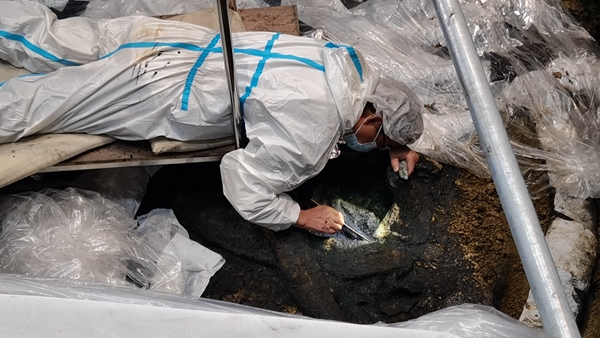

"We have a much stronger squad now," Chen says.
Experts from 34 universities and research institutes nationwide have joined the ongoing excavation. According to Chen, even some firefighters have been invited to analyze the discovery of burn marks, helping to figure out how high the temperature was, which may offer a clue to possible ways in which sacrifices were carried out.
Only a few meters away from the previous two pits, the newly found six pits are so close, yet were so far from the spotlight. They were almost entirely covered by tourist facilities, where visitors could get a closer view of the 1986 excavation site.
Archaeologists researched the area around No 1 and 2 pits again in 2019. Fortunately, a corner of No 3 pit was exposed. All tourist facilities were immediately removed for the new round of digs, and five more pits were found in 2020.
From August to October, four glass-andiron structures covering the pits, known as "excavation capsules", were set up.
To offer a suitable environment for the unearthed relics, the temperature around the pits has been kept between 20 and 25 C, and the humidity is maintained at 80 percent. The level of carbon dioxide inside the capsules is also being closely monitored.
No such facilities have been used in previous archaeological excavations in China.